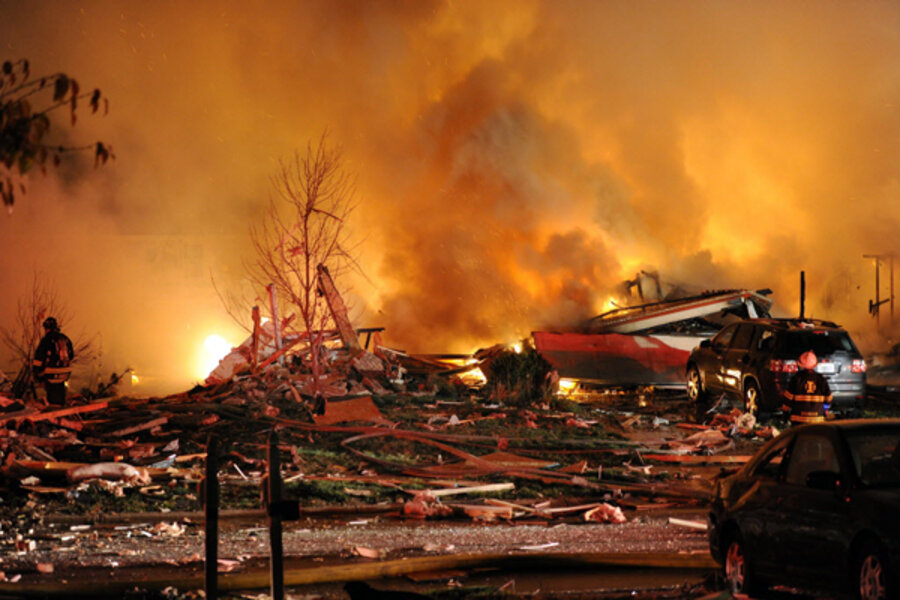Indiana explosion: Area treated as crime scene as investigation continues
Loading...
| INDIANAPOLIS
As investigators try to determine what caused a deadly explosion that ravaged an Indianapolis subdivision, an expert says people shouldn't be alarmed by a homeowner's suggestion that his faulty furnace could be to blame.
Investigators have been looking at gas meters and pipelines as they try to figure out what happened Saturday night when a blast killed two people, obliterated two homes and left dozens more uninhabitable.
John Shirley and his ex-wife own one of the homes leveled in the explosion. Shirley, 50, of Noblesville, said his daughter told him recently that the furnace had gone out in the house she shares with her mother and her mother's boyfriend. He said his daughter told him the furnace was working again, but he wondered if a leak from the furnace could have led to the explosion that killed a couple next door. No one was in Shirley's home at the time of the blast, he said.
Scott Davis, president and principal engineer of GexCon US, an explosion investigation firm in Bethesda, Md., said it's hard to believe a furnace could cause the damage seen in the Indianapolis neighborhood. He noted that most furnaces have multiple safety switches that must be triggered before any gas is used.
"For a furnace to allow that much gas through, you'd have to defeat many of the safety features," he said.
Public Safety Director Troy Riggs said investigators will treat the area as a crime scene until they rule out foul play. Local and federal investigators say it's too soon to rule on a cause but are slowly weeding out some possibilities.
The National Transportation Safety Board sent investigators to check the integrity of a gas main and other lines serving the neighborhood, and local gas supplier Citizens Energy said it also was checking gas lines.
"It's too early to speculate that this might have been caused by a gas leak," Citizens Energy spokeswoman Sarah Holsapple said.
Gas explosions have leveled neighborhoods before, including a 2011 explosion that killed five in Allentown, Pa., and a blast in 2010 in San Bruno, Calif., that killed eight people and destroyed 38 homes. Both of those cases were tied to gas pipelines. A gas leak in a Colorado home last month sparked an explosion that sent five people to a hospital and damaged several nearby homes.
Davis said he's seen a home explosion caused by a malfunctioning furnace before, but it did not level the house.
For an explosion to occur, he said, the amount of natural gas in a confined space must reach a certain level before it can ignite. In many cases, ventilation or a low flow of fuel prevents an explosion from being strong enough to level multiple houses, he said.
Holsapple said investigators are looking at the gas meter for the home believed to have been the starting point for the blast, but she wouldn't comment on whether the house had unusually high gas usage in recent days.
The blast Saturday sparked a massive fire, blew out windows, collapsed ceilings and shook homes up to three miles away, forcing about 200 people out of their homes. The bodies of Jennifer Longworth, a popular second-grade teacher in the nearby suburb of Greenwood, and her husband John, a product developer for a consumer electronics company, were found in the basement of their home, which was destroyed.
Some residents who survived have been allowed to reoccupy their homes, and others will be escorted in to spend an hour to retrieve belongings in the coming days. Adam Collins, the city's deputy code enforcement director, said 29 houses remained uninhabitable Monday.
Barry Chipman, whose house was damaged but is still habitable, hopes those who've lost their homes will rebuild. But he acknowledged Monday that the fabric of the close-knit neighborhood has been altered permanently.
"It's never going to be the same when you've had people lost their lives," he said.







